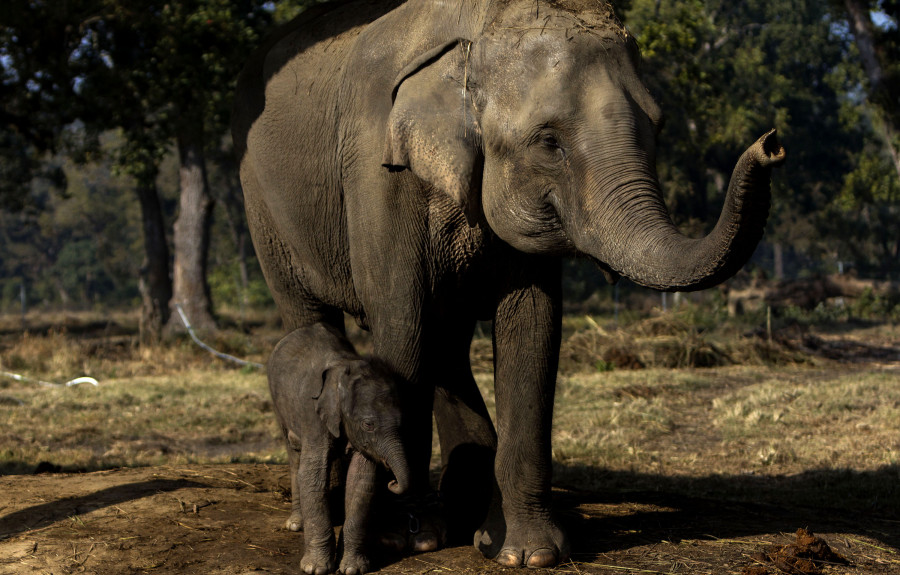Editorial
The importance of preserving biodiversity cannot be overstated
The protection of Nepal’s wild animals is intertwined with the country’s tourism aspirations
It is dispiriting to learn that elephants in Parsa National Park have been unable to make their annual migration through the forests of Sarlahi and into Rautahat. Elephants, nomadic by nature, need to make this migration every year not only for their own sake but also for the sake of the forests. The Pachyderms each eat 330 pounds of plants and fruits in a day, making their stay at one place a massive drain on the plant life of the forest—hence their natural migration patterns. Though the late onset of monsoon is one aspect, the major reason for their inability to cross, according to experts, is the ongoing construction of the Kathmandu-Nijgadh fast track road and the Motihari–Raxaul–Amlekhgunj oil pipeline in and around the Parsa National Park and surrounding community forests. If properly-planned and ample wildlife crossings are not implemented soon, the elephant population might be in danger. And the forest may not be able to sustain and recover from the amount of vegetation consumed. Moreover, there is also an increased risk of negative human-wildlife interactions should the elephants be barred from using their normal migratory path.
Projects such as the fast track road have become controversial in many aspects, including the government turning a deaf ear to local sentiments. As Nepal pushes forward towards development and growth, some projects such as these are inevitable. Yet, the state’s habit of repeatedly taking unilateral and hasty decisions without understanding the consequences of its actions have been rightly criticised. In this case, without planning for proper animal crossings, the government has not only disrupted the elephants’ migration behaviour, but it has also stopped the natural path of many other wild animals. The ramifications of such changes to the ecosystem can be severe for the fundamental survival of the planet. Moreover, for a country like Nepal, its rich natural biodiversity is also linked with economic gains. In the fiscal year 2016-17 over 139,000 tourists visited Chitwan National Park alone, allowing the park authorities to collect Rs220 million in revenue—and the number of tourists visiting all national parks has been growing year by year. The protection of Nepal’s wild animals then becomes intertwined with the country’s tourism aspirations.
The concerned authorities had promised the construction of two animal crossings in the affected area in Parsa back in February 2019. And the government, specifically the Department of National Parks and Wildlife Conservation, in April had developed a complete revamp of road design across the country to accommodate wildlife and to prevent negative human-wildlife interactions. However, monsoon has arrived, and the animals, especially elephants, in the affected area in Parsa have been unable to migrate or cross as usual. The concerned authorities have to come up with long-term solutions after consulting with stakeholders so that such incidents don't occur during construction. Wildlife crossings have been a success globally to reduce human-animal collisions and promote safe passage. This measure should be encouraged in Nepal, too and be built in a timely fashion. However, designers must also take care to note whether the crossings are effective—with four constructed in Chitwan in 2017 at a cost of Rs50 million failing to accommodate large animals and so being a useless investment.




 14.12°C Kathmandu
14.12°C Kathmandu














